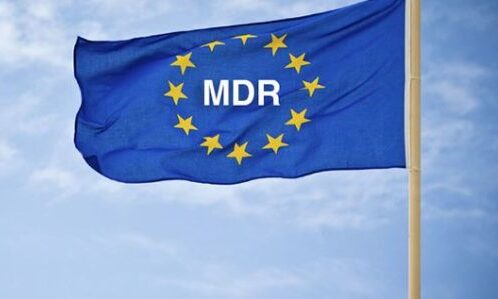The European Union (EU) has a competitive and innovative medical devices sector with over 500 000 types of medical devices and in vitro medical devices placed on its market.
Medical devices and in vitro medical devices placed in the EU market are currently regulated by 4 Directives:
– Directive 90/385/EEC on Active Implantable Medical Devices (AIMDD)
– Directive 93/42/EEC on Medical Devices (MDD)
– Directive 98/79/EC on in vitro Diagnostic Medical Devices (IVDMD)
– Directive 2007/47/EC amending Council Directive 90/385/EEC relating to active implantable medical devices and Council Directive 93/42/EEC concerning medical devices
Problems with divergent interpretation and transposition into national laws of the current Directives, as well as incidents concerning product performance and the need to align with the scientific and technical developments of the sector over the last 20 years, highlighted certain weaknesses in the legal system applicable to medical devices. Revision of the legislation was necessary to reinforce high standards of product quality and safety and ensure the free and fair trade of medical devices throughout the EU territory.
In this way, two new Regulations on medical devices and in vitro diagnostic medical devices were adopted on 5 April 2017, entering into force on 25 May 2017, progressively replacing the existing Directives in the coming years:
– Regulation (EU) 2017/745 of the European Parliament and of the Council of 5 April 2017 on medical devices, amending Directive 2001/83/EC, Regulation (EC) No 178/2002 and Regulation (EC) No 1223/2009 and repealing Council Directives 90/385/EEC and 93/42/EEC (MDR)
– Regulation (EU) 2017/746 of the European Parliament and of the Council of 5 April 2017 on in vitro diagnostic medical devices and repealing Directive 98/79/EC and Commission Decision 2010/227/EU (IVDR)
TRANSITIONAL PERIODS
On 23 April 2020 the Council and the Parliament adopted Regulation 2020/561 amending Regulation (EU) 2017/745 on medical devices regarding application dates of certain of its provisions. This Regulation postpones the date of application for most Medical Devices Regulation provisions by one year – until 26 May 2021 and enters into force on the day of its publication in the Official Journal of the European Union. This measure aimed to avoid shortages of medical devices during the ongoing COVID-19 pandemic due to the limited capacity of national competent authorities or notified bodies to implement the Regulations.
The MDR has a transitional period of 4 years and will fully apply from 26 May 2021. The IVDR has a transitional period of 5 years and will fully apply from 26 May 2022. During the transitional period, manufacturers can opt to place medical devices on the EU market under the applicable EU Directives or under the new Regulations if they fully comply with these.
Devices certified by a notified body can benefit from a transition period provided for in MDR Article 120 (2), which allows devices with a valid certificate under the MDD and AIMDD to be placed on the market up to the latest 27 May 2024, although they will need to comply with certain requirements of the MDR from 26 May 2021. Class I devices must be in compliance with the MDR by 26 May 2021.
References:
1. Council Directive 90/385/EEC of 20 June 1990 on the approximation of the laws of the Member States relating to active implantable medical devices.
2. Council Directive 93/42/EEC of 14 June 1993 concerning medical devices.
3. Directive 98/79/EC of the European Parliament and of the Council of 27 October 1998 on in vitro diagnostic medical devices.
4. Directive 2007/47/EC of the European Parliament and of the Council of 5 September 2007 amending Council Directive 90/385/EEC on the approximation of the laws of the Member States relating to active implantable medical devices, Council Directive 93/42/EEC concerning medical devices and Directive 98/8/EC concerning the placing of biocidal products on the market.
5. Regulation (EU) 2017/745 of the European Parliament and of the Council of 5 April 2017 on medical devices, amending Directive 2001/83/EC, Regulation (EC) No 178/2002 and Regulation (EC) No 1223/2009 and repealing Council Directives 90/385/EEC and 93/42/EEC.
6. Regulation (EU) 2017/746 of the European Parliament and of the Council of 5 April 2017 on in vitro diagnostic medical devices and repealing Directive 98/79/EC and Commission Decision 2010/227/EU.
7. Regulation (EU) 2020/561 of the European Parliament and of the Council of 23 April 2020 amending Regulation (EU) 2017/745 on medical devices, as regards the dates of application of certain of its provisions.















